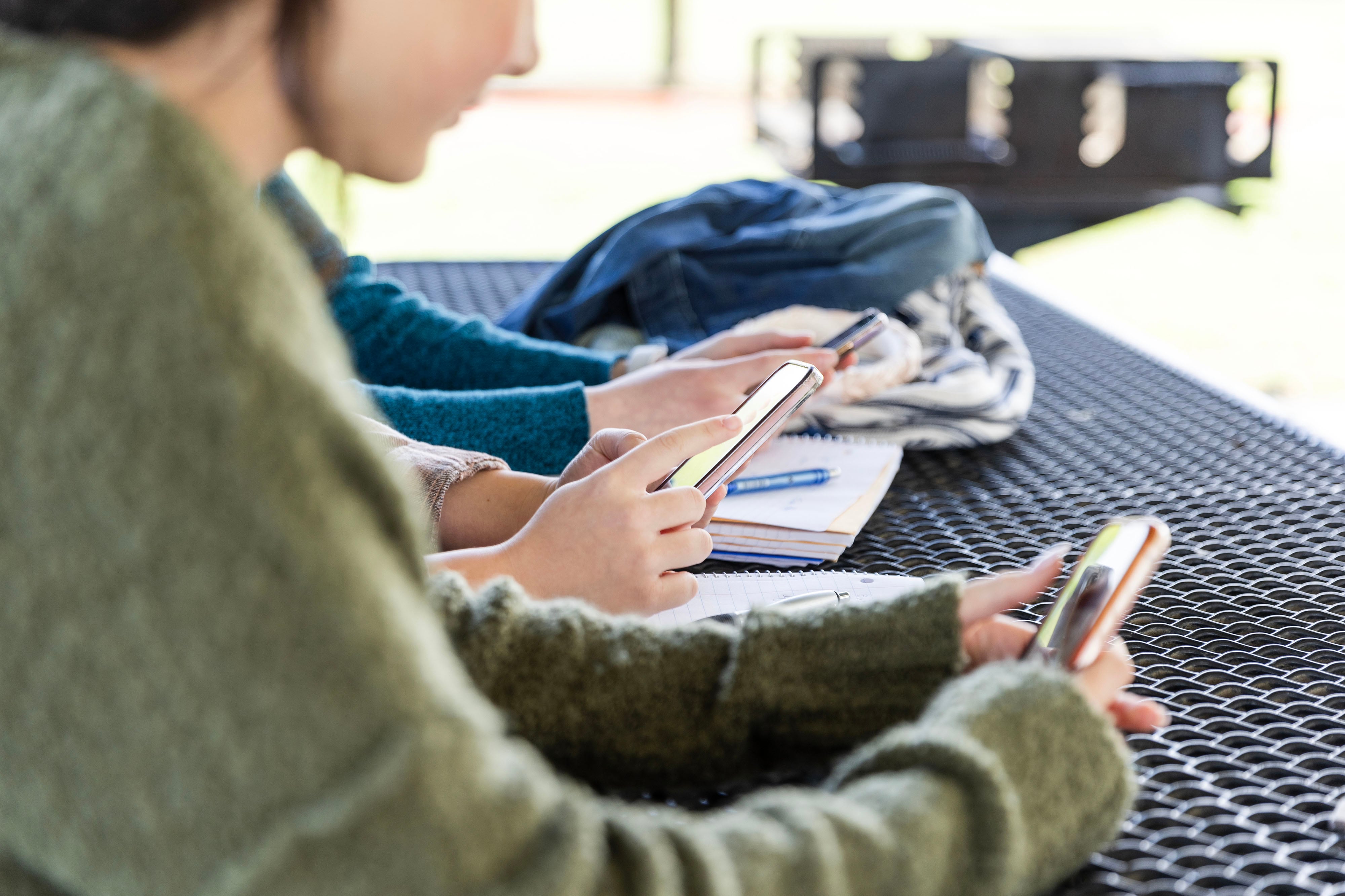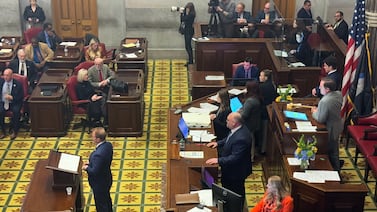New York City, the nation’s largest school system, is considering a plan to ban cellphones in its roughly 1,600 schools starting in February, according to several principals briefed on the possible policy.
Schools would have to come up with their own policies, principals told Chalkbeat, whether they collect devices at the start of the day or have students carry their phones in Yondr pouches, cloth cases for phones that are locked with a magnet from morning to dismissal.
Even though such systems can be pricey, school leaders don’t expect to receive extra money in their budgets, principals said, according to the plans shared with them. The principals spoke on the condition of anonymity since they were not authorized to speak to the media.
When asked to confirm the preliminary plans, Department of Education spokesperson Nathaniel Styer wrote, “No decisions have been made yet!”
For collecting phones, schools might need to buy cubbies or other storage equipment, plus they need staffing. (Some school leaders have wanted to steer clear of collecting phones, worried about liability issues for lost devices.) Yondr pouches cost about $25 to $30 per student, with pricing varying depending on school size, a company spokesperson previously told Chalkbeat.
Schools Chancellor David Banks has been talking with principals across the five boroughs about cellphones, and said that they overwhelmingly want a citywide policy. Gov. Kathy Hochul is also planning to announce a statewide school cellphone policy this year.
School leaders have been able to set their own cellphone policies since 2015, when former Mayor Bill de Blasio lifted the school cellphone ban largely due to equity issues: Students in schools with metal detectors, which largely serve low-income families, were forced to pay local businesses $1 a day or more to store their phones before they entered school.
Nearly 10 years ago, however, cellphones were not as ubiquitous, especially for younger kids, and teens weren’t glued to social media apps like Instagram and TikTok. They didn’t have easy-to-hide AirPods. And their parents weren’t calling their kids as often.
As a result, the city’s schools have a patchwork of policies that many teachers say are difficult to enforce. Educators at schools where phones are already collected or put in pouches say those systems are not foolproof, but they at least appreciate the clear message to students. At schools with a cellphone ban on paper, teachers say the onus is on them to enforce, and enforcement can vary classroom to classroom, leading to confusion among students.
A growing chorus of educators, experts, and politicians have been raising the alarm more recently about the negative impacts of cellphones on youth mental health and how they take away from learning time. A growing number of school districts are banning cellphones, including Los Angeles, the nation’s second largest district, which has until January to implement a new policy.
One principal voiced concern about New York City’s possible February timeline, worried that starting a major new policy midyear could prove challenging to implement. But this principal also said there wasn’t enough time to implement a ban by September.
“The amount of money it takes to successfully collect, secure, and distribute around 700 phones every day is staggering,” a school administrator said in response to a Chalkbeat survey about cellphones.
Before this school collected phones, the administrator said, teachers were consumed with battles over keeping phones from disrupting class time. Administrators were spending an inordinate amount of time responding to cellphone issues. Student conflicts that the school previously could have mediated were instead being inflamed by social media.
But the administrator warned that students’ addictive connections to their devices could create conflict when they are forced to surrender or get back their phones each day. The system requires a coordinated approach and an empathetic staff who can de-escalate charged emotions.
Deborah Alexander, a parent leader who sits on the Citywide Council for High Schools, said her parent board recently met with Education Department officials, and she shared her views against a cellphone ban.
She understands why parents are in favor of a ban in theory, but she fears that enacting a ban will prove problematic. Many schools already ban phones, she said, and the remedy on the books — to confiscate a student’s device — would be the same with a citywide ban. (Several educators told Chalkbeat they are told not to touch students’ devices.)
Alexander wondered whether schools would have the staffing to collect and hand out, or pouch and unlock, phones as kids come and go throughout the day. She asked who will pay for lost or broken phones. She fears that equity issues might arise at schools with affluent PTAs that can make up for budget gaps created by cellphone policy costs.
She asked about exceptions: phones used to monitor health conditions or as translation devices, for instance. Parents might be surprised, she said, when their children have to arrive at school half an hour earlier and leave half an hour later because of cellphone storage or pouches.
“Kids will be that much more glued to phones the second they walk out of school,” Alexander wrote in an email. “And when they walk in, according to tons of teens I’ve spoken to, they’ll be reminded that they can’t be trusted; that they’re guilty before they’ve done anything wrong, much like when they enter schools through metal detectors.”
Amy Zimmer is the bureau chief for Chalkbeat New York. Contact Amy at azimmer@chalkbeat.org.
Michael Elsen-Rooney is a reporter for Chalkbeat New York, covering NYC public schools. Contact Michael at melsen-rooney@chalkbeat.org.







